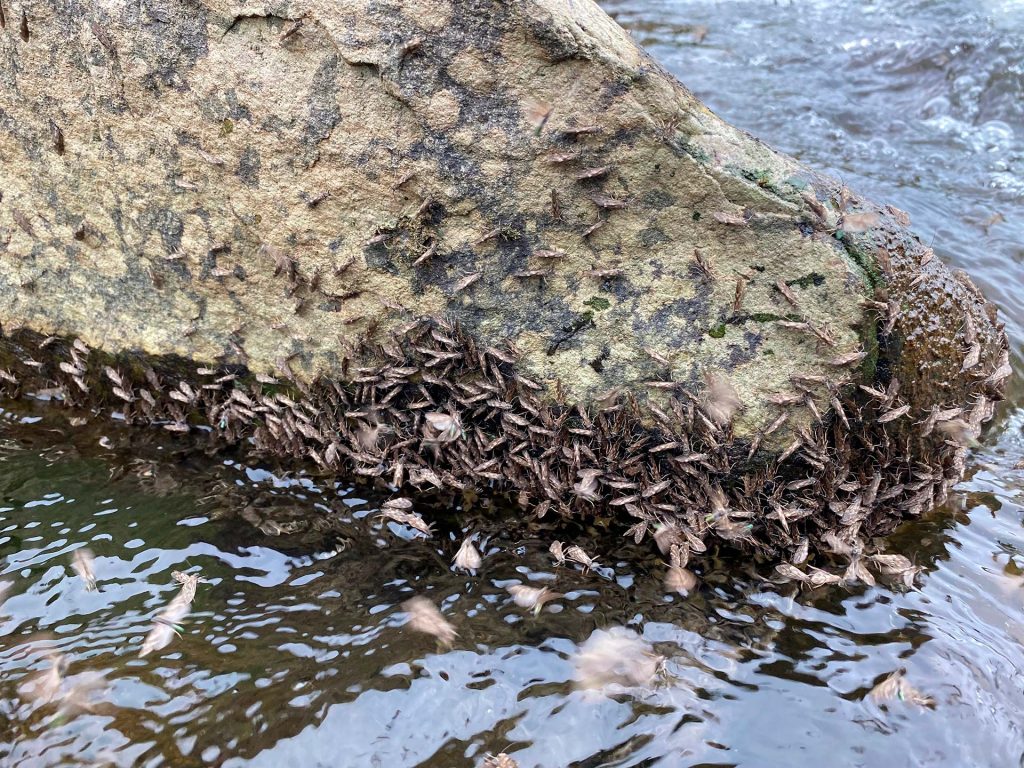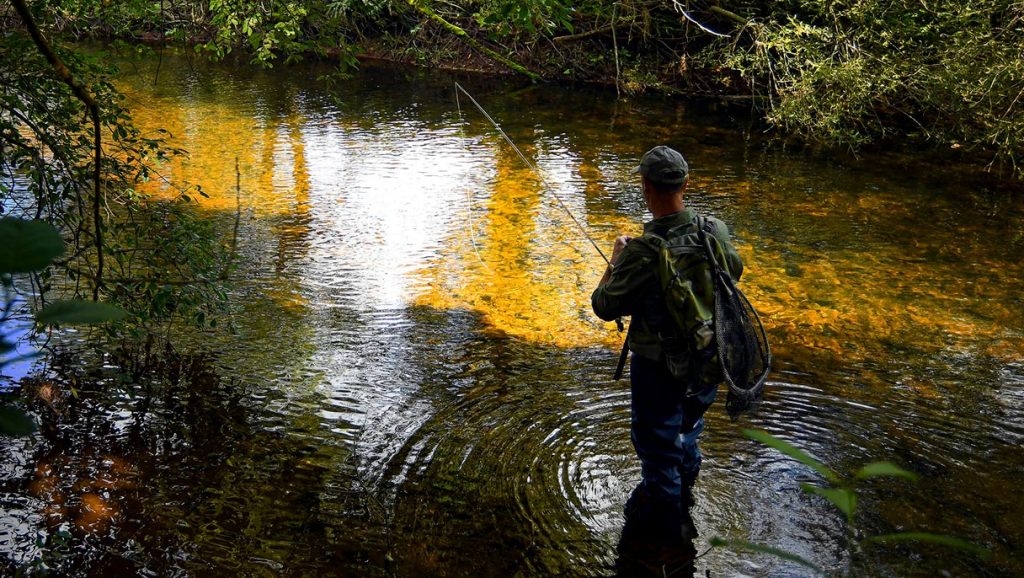How to wade when trout fishing
Master the art of wading for trout with Derbyshire guide Don Stazicker's expert tips on stealth, safety and smart positioning to improve fly presentation and avoid disturbing feeding fish.
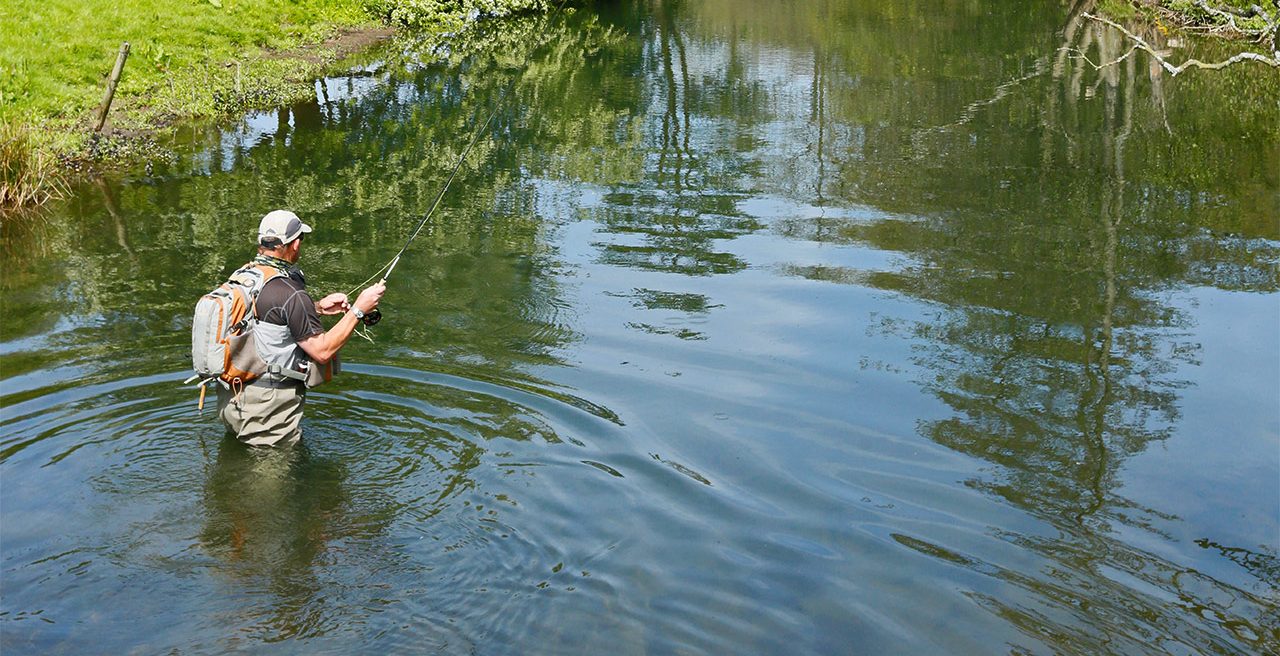 Derbyshire fishing guide Don Stazicker wades while trout fishing in a river
Derbyshire fishing guide Don Stazicker wades while trout fishing in a river
Making waves
If you can catch a trout without wading, it’s usually better to do so.
Fish detect low-frequency waves caused by clumsy wading and high-frequency sounds generated by kicking over rocks or the sound of boot studs and wading staffs banging on rocks. These sounds will alert the fish to your presence.
Everyone who has waded for trout has probably moved up through a pool and made the comment that “they’ve stopped rising” without making the connection that it was the disturbance they caused that stopped the rise.
Move slowly to avoid causing waves and place your feet quietly without disturbance.
Keep watching any feeding trout. If you think your entry into the pool has alarmed them in any way, wait until they resume normal feeding activity before you cast.
Once in place, keep your feet still and don’t make waves by rocking back and forth when you cast.
When possible, use weedbeds or rocks for cover.
If you are sharing the river with others be aware that wading on a silted riverbed upstream of them may send sediment downstream and ruin their sport.
When fishing downstream or towards fish in recirculating backwaters, disturbed silt can alert trout.
Where wading is unavoidable
A river’s topography often dictates that wading is essential for success.
On large rivers the trout may lie beyond casting range or in a position where it will be impossible to achieve a good presentation of the fly without wading.
Heavy bankside vegetation can make it impossible to deliver a fly from the bank.
High bare banks make the angler very obvious to wary fish but getting into the water helps them to avoid being ‘skylined’.
If you need to move any distance, exit the river, walk along the bank and re-enter rather than wading through long stretches of river and disturbing fish.
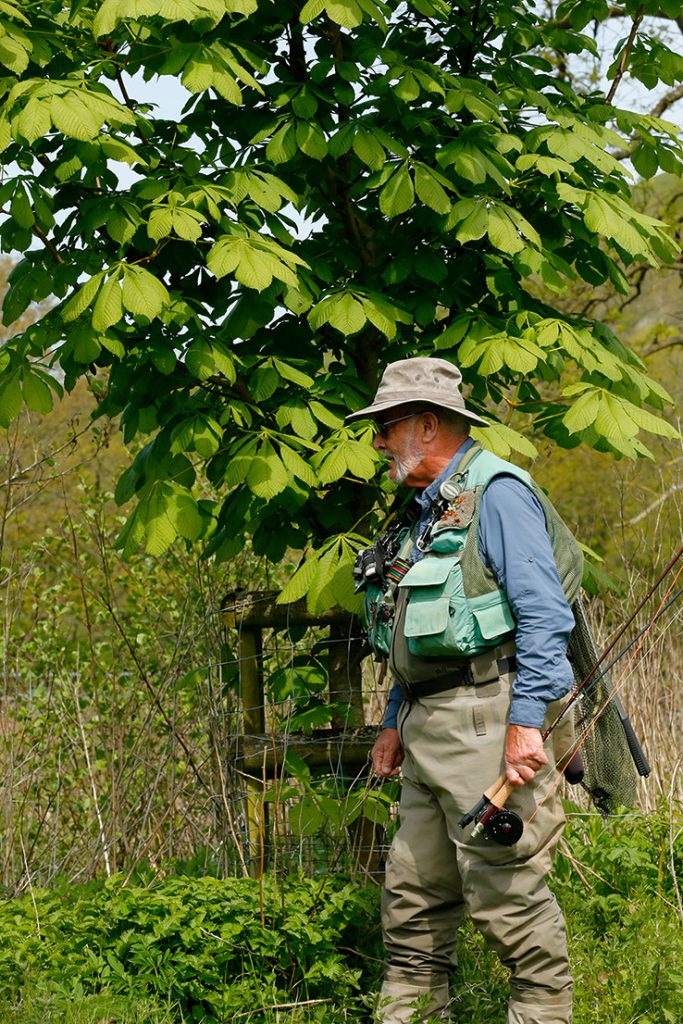
The art of concealment
Wading reduces the amount of your body visible above the water and allows you to get closer to the trout.
Wade to put trees or banks behind you to avoid being ‘skylined’ and obvious to the fish.
On sunny days, the ability to position yourself in the shadows of trees and bushes is a real benefit.
Maximise your concealment by wearing drab clothing, using dark fly-lines, matt-finish rods and by utilising side-casts wherever possible.
Consider wearing kneepads and kneeling in shallow water.
Wading closer to trout
Most fly presentations can be compromised by drag. As the length of line and leader on the water increases so does the risk of drag.
Modern techniques of presenting the fly usually involve keeping as much fly-line and leader off the water as possible. This often requires the fisher to get close to the fish. The further you cast, the harder it is to keep your line off the water.
Tenkara, leader-to-hand, Czech nymphing and Euro-nymph techniques all benefit from the closer approach made possible by wading.
Don’t use complex and often inaccurate slack-line casts to reduce drag when it is usually easier and more effective to move a few feet to a position where drag is less of a problem.
Place the line and leader in current flowing at the same speed and in the same direction as the fly.
Avoid placing the line and leader across currents flowing at different speeds and in different directions.
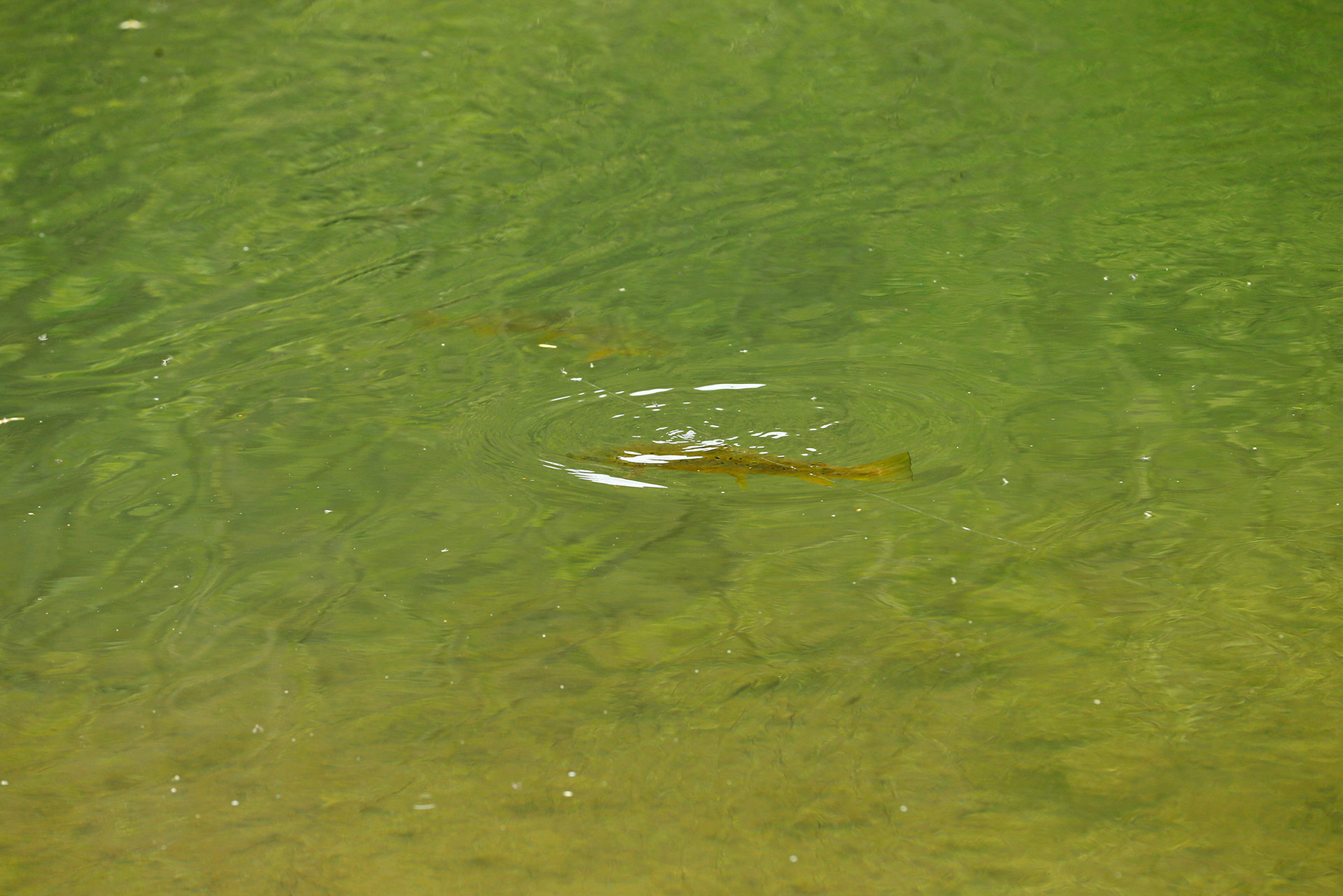
What’s on the menu?
When wading for trout we can take a kick sample to show us what creatures are present in the stream and help us to select a suitable fly.
We can get closer to the water’s surface to spot insects stuck in the surface film, such as shucks and spent flies, which are very difficult to see from above.
By wading into the trout’s food lane and using a sample net, we can gain an idea of the food available in the water column and on the surface. This can disclose the presence of insects available to feeding fish but not visible to a cursory glance.
Make sure your sample is representative of what the fish is seeing. Sampling the main flow of the river may not tell you what is being eaten by a fish in a backwater or under trees.
Nine tips for better wading when trout fishing
-
Never wade through water you haven’t fished first. There may be fish present you haven’t spotted.
-
Don’t stand in known lies – even if the fish have vacated the spot. You may wish to return and cover the lie later.
-
Identify lies and where to stand to present your fly most effectively before stepping into the water. You’ll avoid wandering about the pool.
-
Trout may be facing downstream in backwaters. Consider the best angle to approach them.
-
If you can approach a pool from downstream through faster water, this can help to prevent waves from pushing into a pool and disturbing the fish.
-
If more than one fish is feeding, decide on the order in which you will cast to them and how you will play them when hooked, to avoid spooking the other fish in the pool.
-
Control your excitement. It’s a common fault to cast at one fish and then move to the next and then the next and then the next, until suddenly you have covered the whole pool and caught nothing. Concentrate on a single fish near to you and only when you’ve caught it or you are sure you have spooked it, should you move on to the next.
-
Target fish across the pool before casting further up the pool.
-
Don’t creep! It’s very easy to keep taking small steps up the pool with each cast resulting in your fly-line landing on the trout you are trying to catch and wading through fish you haven’t even noticed. Pick your spot and stay still.
Thoughts on safer wading
Careless wading kills a number of anglers every year.
Assess the situation, your abilities and the consequences of a fall. This is essential if you are to wade safely. If in doubt, don’t wade.
It’s much easier to see river features from the bank than when you are waist-deep in the water. Polarising sunglasses allow you to gauge depth and spot hazards. Watch out for refraction, which makes clear deep water appear much shallower than it is.
Use wading boots with studded soles or cleats if necessary. Rubber soles without studs are very slippery on algae-covered rocks. Felt soles are slippery on mud and grass.
Wear a wading belt to prevent water entering the legs of the waders if you take a spill.
Use a wading staff as a third point of support and to probe unknown depths.
Many experienced trout-fishers don’t wear a life jacket, especially in small streams and water they know well. However, it is advisable to wear a buoyancy aid or life jacket because an accident can happen in shallow water and seemingly benign situations.
Always assess the water downstream because that’s where you will end up if you fall over. If that water is so fast or rough that you would struggle to survive in the case of a fall, then don’t wade above it.
As you wade deeper, the water supports more of your bodyweight and there is less pressure down
through your feet to grip the bottom – eventually you will just float away.
Falls are less likely in deeper water as the water supports you if you trip while moving. Most trip-falls take place in less than knee-deep water.
Moving downstream is easy; moving back upstream is much harder and may be impossible.




